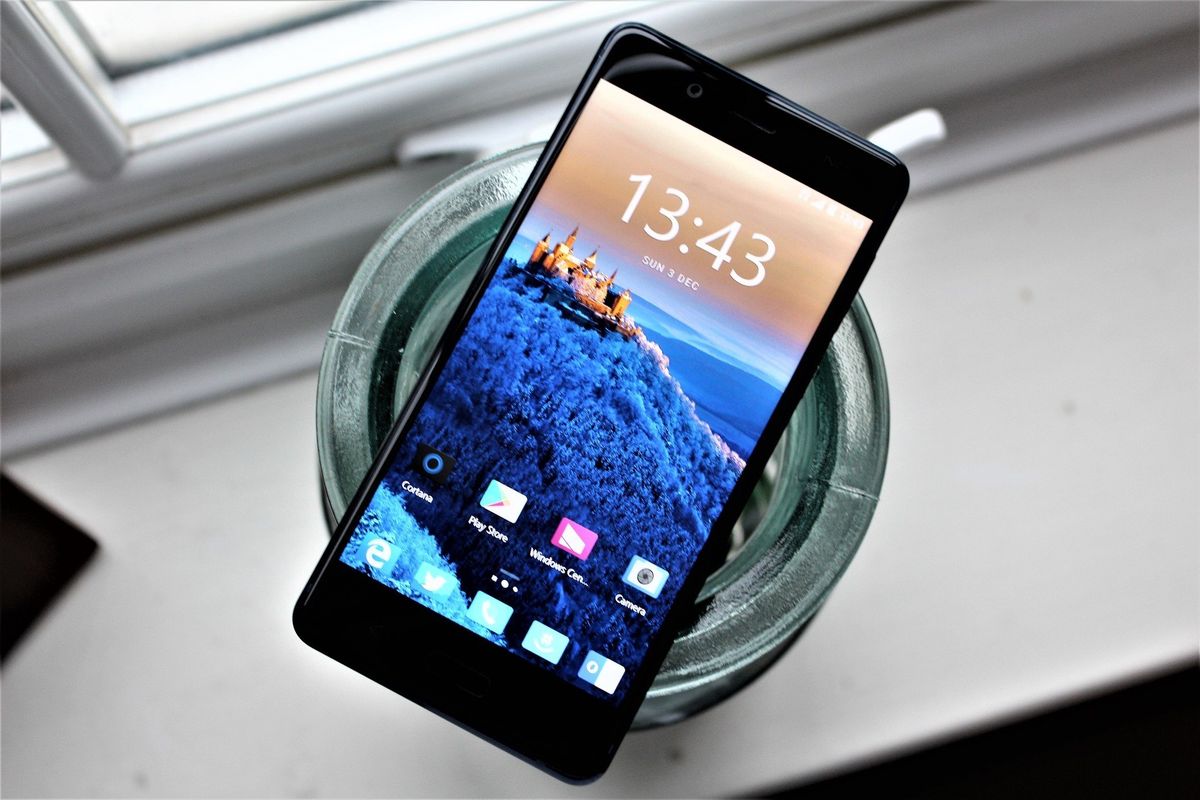A lot has changed since we last reviewed a Nokia flagship smartphone here at Windows Central. Not including Microsoft branded Lumia handsets, the last 'Nokia' flagship phone we reviewed was the Nokia Lumia Icon/930 back in 2014, almost four whole years ago. The Microsoft-Nokia acquisition that took place that year marked the end of an era for Nokia. The brand was all but dead, with no new smartphones planned under the infamous 'Nokia' moniker.
However, not all was lost for Nokia fans. Just two years after the acquisition took place, Microsoft sold the Nokia brand to a company called HMD Global who wanted to start building Nokia branded smartphones again, but this time running Android. Good news for Nokia fans, bad news for Windows Phone fans. That sale was finalized in December 2016, and a year later, HMD Global now sells a line of high-quality Android handsets under the Nokia brand.
Here at Windows Central, we understand that a fair few Windows Phone fans are only here because of Nokia. When Nokia adopted Windows Phone in 2010, die-hard Nokians were obliged to start using Lumia branded handsets too. Since the acquisition in 2014, however, Nokia fans have had to put up with Microsoft-branded Lumia devices because that was all that was left of Nokia. Well, not anymore.
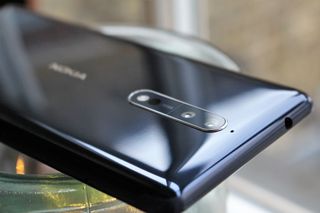
We've seen immense interest in the Nokia Android phones from current Microsoft Lumia branded smartphone owners here at Windows Central, and as such we thought it would be a great idea to review Nokia's latest flagship; the "Nokia 8" for those remaining Lumia 950 users who want to jump back on the Nokia branded smartphone bandwagon. So here it is, our review of the Nokia 8, powered by Android.
Nokia 8 specifications
| Category | Spec |
|---|---|
| Operating System | Android 7.1.1 (Android 8.0 update available) |
| Display | 5.3-inch IPS LCD 2560 x 1440 (554ppi)Gorilla Glass 5, 2.5D curved glass |
| Processor | Qualcomm Snapdragon 835 (MSM8998)Octa-core up to 2.45GHz |
| GPU | Adreno 540 |
| RAM | 4GB or 6GB |
| Storage | 64GB or 128GB UFS 2.1 |
| Expandable | Yes, up to 256GB |
| Battery | 3090mAh |
| Charging | USB-C (USB 3.1 Gen 1)Quick Charge 3.0 |
| Water resistance | IP54 splashproof |
| Rear Camera 1 | 13MP RGB, Carl Zeiss optics, f/2.0, 1.12-micron pixels, OISDual tone flash, PDAF, laser autofocus4K 30 fps |
| Rear Camera 2 | 13MP monochrome, Carl Zeiss optics, f/2.0, 1.12-micron pixels |
| Front Camera | 13MP, f/2.0, 1.12-micron pixels, display flash4K 30 fps |
| Connectivity | LTE 3xCA, Cat 9Wi-Fi 802.11 ac MIMOBluetooth 5.0, NFC, ANT+GPS/AGPS, GLONASS, BeiDou |
| Sensors | Ambient light sensor, Proximity sensor, Accelerometer, E-compass, Gyroscope, Fingerprint Sensor, Hall sensor, Barometer |
| Audio | 3.5mm headphone jackThree microphones, 360-degree sound capture |
| Security | One-touch fingerprint sensor at the front |
| SIM | Dual SIM slot |
| Network | LTE: Band 1/2/3/4/5/7/8/20/28/38/39/40/41WCDMA: Band 1/2/4/5/8TD-SCDMA: Band 34/39GSM 850/900/1800/1900MHz |
| Dimensions | 151.5 x 73.7 x 7.9mm160g |
| Colors | Polished Blue, Polished Copper, Tempered Blue, Tempered Steel |
Nokia 8 design and display
Let's start with what is always a hallmark feature when it comes to Nokia smartphones, its design. The Nokia 8 comes in several color configurations, including silver, copper, blue, and glossy blue. We're using the glossy blue model, which feels fantastic in the hand. All variants feature an aluminum body, with the glossy blue and copper variants featuring a mirror-like finish on the back that makes it feel a little like glass. This makes the phone feel a bit fragile in hand, unlike the old Nokia Lumia flagships that felt like tanks.
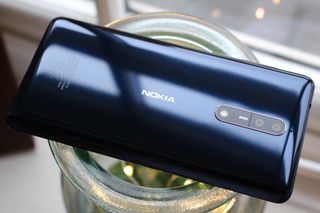
I do prefer the mirror-like finish found on the copper and glossy blue models, if only because it makes those variants feel a little more premium in hand. Not everyone will enjoy the glass-like finish, however, as it attracts fingerprints very quickly and is super slippery. If so, the silver or standard blue versions will be more to your liking. Outside of the mirror-like finish on the body, the Nokia 8 is a relatively uninspired looking smartphone, with no real outstanding design decisions.
And that's okay, because not every smartphone needs to push the boat out when it comes to design. The Nokia 8 is still a great looking phone and feels fantastic to hold and manipulate. The unibody design curves around the edges of the phone, all the way up to the glass front which makes the device feel like a single slab of aluminum and glass, similar to the iPhone 7. The volume and power buttons are located to the right of the phone and have a very satisfying, clicky feeling to them. No complaints there. There's also a USB-C port and headphone jack.
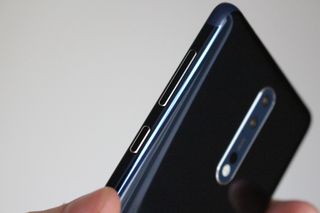
Moving on to the front of the device, here's where things start to fall down a bit for me. This is a 2017 flagship that's rocking the face of a 2016 flagship. It features huge bezels on all sides and is rocking a relatively standard 16:9 QHD IPS LCD. It's a nice display with great viewing angles and gets super bright when outdoors, similar to how the old Nokia Lumia handsets did. Now, this is a personal preference of course, but I wish HMD Global had opted for an 18:9 display with less bezel. The front of this phone makes the handset feel dated, and I'd much rather have a bigger display in the same size form-factor.
I also wish the Nokia 8 was rocking an OLED panel instead of LCD. Don't get me wrong, the LCD panel on this phone is great; more than enough for the price you pay, but OLED is just better. Deeper blacks, brighter colors, and better battery life are all great advantages to using an OLED panel. The LCD on the Nokia 8 has some great viewing angles, but rarely am I looking at my phone at any angle other than dead-on, so great viewing angles is a moot advantage for me.

Below the display features capacitive back, home and multitasking buttons, which I'm glad are here considering how big the chin is on this phone. The home button also acts as a fingerprint reader, which I'm not overly impressed with as I find it to be too small and somewhat slower than the fingerprint readers found on other flagship devices. Above the display, we're rocking an equally large forehead bezel, featuring a speaker grill, front-facing camera, and the infamous Nokia logo.
Nokia 8 software
The Nokia 8 is not running Windows phone, much to my dismay. Instead, it's running a super clean, almost stock version of Android, which I always prefer over the clunky, incredibly customized versions of Android that you often find on the likes of the Samsung Galaxy or HTC flagships. This version of Android on the Nokia 8 is essentially a clean slate, allowing you to customize it in any which way you want without there being already predefined customizations set by the OEM.
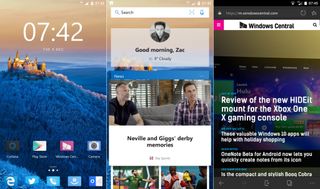
The Nokia 8 does come bundled with a bunch of Google apps out of the box, but most of them can be disabled. This means if you wanted, you can disable everything Google has to offer and download Microsoft's own offerings instead, which is exactly what I did. Instead of using the default app launcher, I use the Microsoft Launcher, along with Cortana as my default assistant, Edge as my default web browser, Outlook for email and many more Microsoft apps for specific things.
There are a couple of customizations that Nokia has done here, mostly to aid some of the Nokia-specific features that you won't find on other phones. For example, there's Glance screen (hey, remember that?) which is configurable in the Settings app. It's not as useful or as configurable as it was on Windows phone, but it does show you how many new text messages, phone and email messages you've missed. It also shows the time, date and battery percentage.
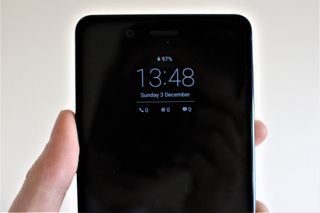
The other notable change Nokia has made here is the camera app. It's not the best camera app I've ever seen. In fact, I'm not impressed with the camera app on this phone at all. We'll talk about image quality in our camera portion of the review, but for now, I just want to focus on the camera app itself. It looks like something that was designed in Paint. It's also super slow to open and very unintuitive and clunky.
For example, the camera app features a whole bunch of configurable options, which is great, but the configuration menu is hidden behind a hamburger menu that takes you away from the viewfinder so you can't see the changes you're making. The old Nokia Camera app on Windows phone was so much more intuitive, with menus that were transparent so you could see the changes you were making. It's fair to say the Nokia Camera app on Android is poor and holds no candle to the old Nokia Camera app that we had on Windows phone. Hopefully, this improves over time.
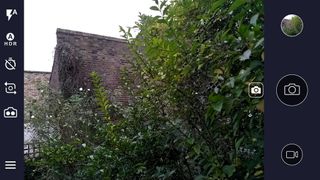
A lot of Windows phone users are wary of making the switch to Android because of the horror story that is OS updates. A fair few Android OEMs are bad or slow at supporting their devices with official Android releases, which sucks and contributes to the atrocity that is Android fragmentation. Luckily, those interested in the Nokia 8 can rest easy, as Nokia has promised at least two years of speedy Android security and OS updates. In fact, my Nokia 8 updated to Android 8.0 from 7.1.1 over the weekend, bringing with it a whole bunch of new features and optimizations.
So, if the frequency and efficiency of official OS and security patches are important to you, the Nokia 8 is a better choice over the likes of Samsung or HTC made devices. Even OnePlus takes its sweet time in pushing out the latest version of Android on its smartphones. Nokia has been quicker than most in this regard, and that's great.
It's also worth noting that with all the Microsoft software and services installed on the Nokia 8, this device is pretty much a Windows phone without the live tiles. It hooks into all my Microsoft services and is even paired up with my Windows 10 PC thanks to Cortana and the Microsoft Launcher / Edge. The only thing I'm missing is live tiles, which you can technically achieve if you download a third-party live tile launcher from the Google Play Store. I'd rather stick with Microsoft's own launcher, however.
Nokia 8 performance and battery
Thanks to Nokia's super clean version of Android, this device simply flies when it comes to using the device day-to-day. I've seen no slowdowns or laggy performance when scrolling through or multitasking between apps. I would often see frame drops on the Samsung Galaxy S8; there's no such issue here on the Nokia 8. This is aided by the 4GB or 6GB of RAM that comes bundled with the device. Since there's no extra crapware running on top of the Nokia 8, there's more memory to keep your device running nice and smooth. Just the way I like it.
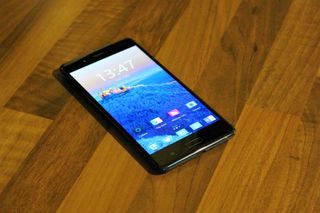
Battery life is always an important factor for any smartphone, and I can confidently say that the battery life on the Nokia 8 is superb. I'm able to get through a full day with ease, sometimes lasting almost two days before dropping below 5% battery. I would often be hitting around 25% at bedtime, and thanks to quick charge support, charging via the USB-C port on the device takes no more than an hour at most.
There's no wireless charging here, which I know is going to annoy many Nokia fans looking to switch from the old Lumia flagship devices, but I honestly feel quick charge is better and more convenient in 2017. It's faster, that's for sure, making top-ups via cable often more convenient than using a wireless charger anyway.
Nokia 8 sound and camera
I'm not incredibly impressed with the sound quality of this device. Featuring a single, downward firing mono speaker, it's not super bassy or impressive. It can get pretty loud, but that's not necessarily a good thing. I do wish HMD Global had opted for a stereo speaker set with another one in the front-facing earpiece at the top like on the iPhone.

The cameras, on the other hand, is a different story. The rear cameras are great, capable of clear, high-quality photos and video in well lit scenarios. It's no Pixel 2 camera by any means, but it's better than your average $500 smartphone camera. It's rocking dual 13MP cameras, one a standard shooter and the other a monochromatic lens. The monochrome lens allows you to shoot in black and white, something I really couldn't care less about.
Nokia opted for a monochrome lens alongside the standard shooter as it allows for greater color accuracy when taking photos. It's a small difference and one that I wouldn't miss if the Nokia 8 didn't have it. The dual-lens setup does allow for that "Bokeh" effect that so many other flagship devices are obsessed with, which is a nice addition but isn't something I ever found myself using.













The camera is okay when it comes to low-light photography. I found that photos often came out a little grainy and soft, however, it's definitely not the worst low-light shooter I've ever used. There's also the "bothie" mode, something Nokia is boasting about for reasons that I can't think of. A bothie is both a selfie and a rear shot photo, at the same time. It splits the viewfinder in half, allowing you to take a photo of yourself using the front camera and the subject in front of the rear camera. I can't see the point in this.
The selfie shooter on its own is pretty good. It's also 13MP, meaning your selfies are going to look crisp and clear, and maybe a little too detailed for a selfie camera. Overall, the cameras on the Nokia 8 is about what I'd expect from a $500 device. It's more than capable in most scenarios, if sometimes a little slow to actually take the photo. And as mentioned above, the camera app itself needs some serious work if it is to be taken seriously, especially considering the "Zeiss" branding etched on the back of the phone.
Nokia 8 closing thoughts
As a fan of Windows phone and a long time Nokia Lumia user, using the Nokia 8 is like bumping into an old ex that you loved but has moved on and is happier than ever. HMD Global has built a fantastic, affordable flagship with great performance, a clean version of Android and a set of cameras that are more than capable.
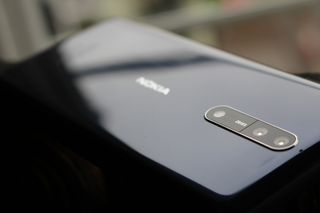
I do admit; I really didn't want to like the Nokia 8. My evil, bitter side was hoping that without Windows phone, the Nokia brand would crash and burn in the chaos that is the world of Android smartphones. But now I've used the Nokia 8, I like it a lot. Sure, not every aspect of the device is deserving of the Nokia brand, but that's fine because this is still a great phone.
There's just plenty to like about this device, even down to the little details. Things like the vibration motor, which feels great in this phone with sharp, clean vibrations. There's also the volume and unlock buttons, which have a satisfying clicky-ness to them. Admittedly, there are some annoyances with this phone too, mainly referring to the slow and small fingerprint reader on the front of the device.
Regardless, do I recommend the Nokia 8 for those looking to make the switch from an old Lumia? Yes, I think I do. For the price you pay, I don't think you can go wrong. The Nokia 8 is a well-rounded, affordable flagship with plenty of good things going for it.
The Good
- Premium build
- Great battery
- Buttery smooth performance
The Bad
- Terrible camera app
- A fingerprint magnet
- Slow fingerprint reader
- Traditional 16:9 aspect ratio in a world of 18:9 displays

